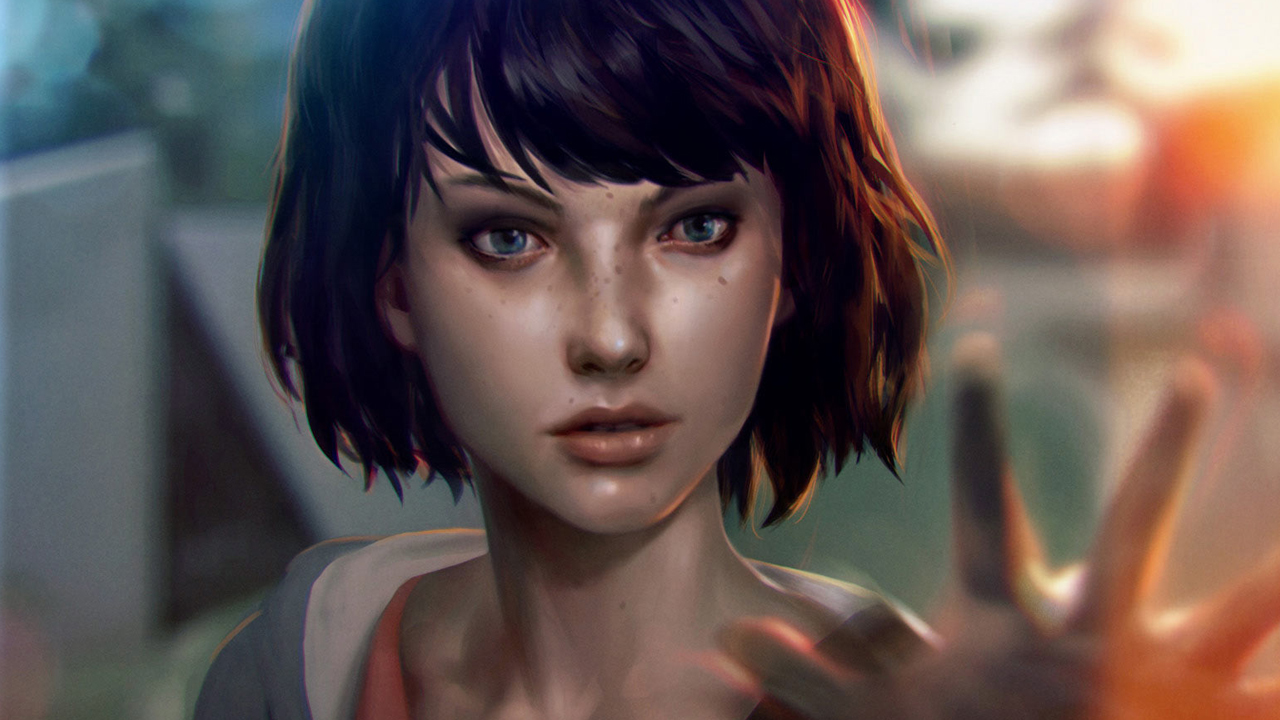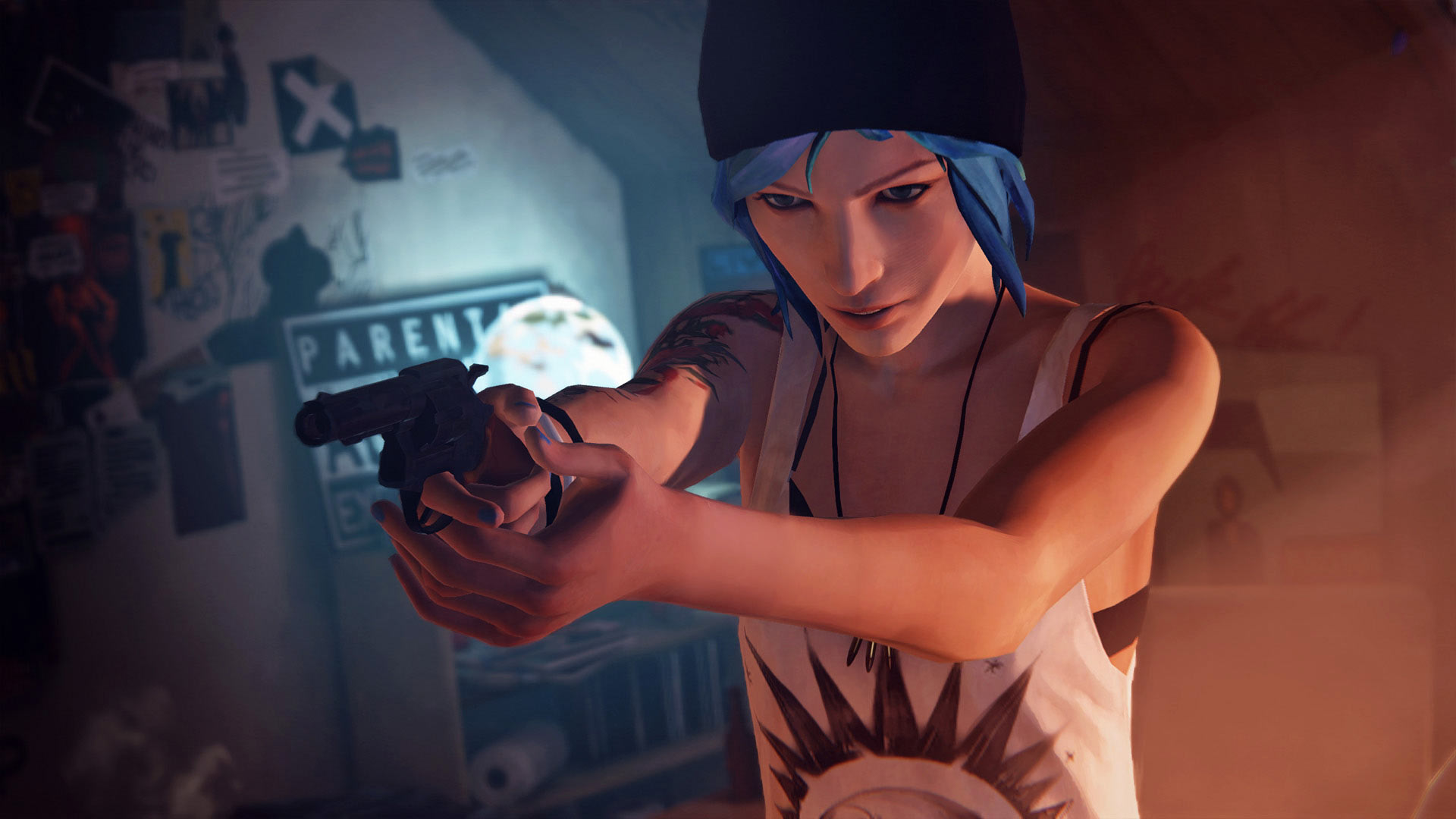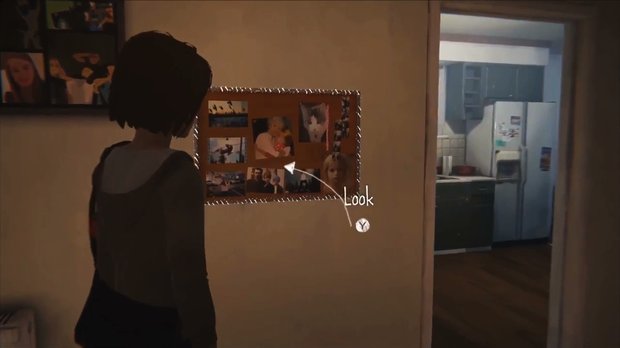How Life Is Strange makes normality... rather special
My Gamescom demo of Life is Strange opened with a monologue from the lead character. This is in no way an unusual video game presentation trope. Hell, it’s a pretty standard technique for any trailer of anything. Show some establishing environmental footage, have the lead character say some ominous things over it to set the tone and introduce themselves, and boom! Whole game concept summed up with economy, job done, off to the pub for pie and crack-pipes. But in the case of dontnod and Square-Enix’s upcoming adventure game, the effect is rather different.

There’s a notable lack of doom-laded foreshadowing. Not a hint of burning, post-apocalyptic hellscapes punctuated with talk of war and ruin. In fact there’s nothing whatsoever in the way of generic, broad-strokes dramatic push or any of the other overblown devices that studios traditionally fall back on when they want to grab our attention for a big reveal. Instead there’s Max, musing over the various victories and failings in her high school life, and highlighting the difficulties of moving back to her home town after a long absence, as well as her hopes for the future.
If you think all of this sounds like a remarkably emotionally balanced and confusingly underplayed intro for a bit of video game promotion, then your observation skills are strong. That’s exactly what I thought on the day too. But crucially, the disarming normality of it all was far more arresting than any number of gravelly voiced misery-mongers’ end-of-days laments.
Because that’s the striking thing about Life is Strange. Aside from the time-reversal mechanic it uses to allow Max to manipulate certain events and puzzles to her advantage, it doesn’t feel video gamey at all. In fact take out the temporal tomfoolery, and you’ve got something that feels for all the world like a deeply naturalistic, playable indie movie.

Think that sounds dull? Trust me, it’s really not. The thing is, we’ve all become far too used to gaming’s predilection with sci-fi technology, gut-wrenching horror and rampant dragon fetishism. By building itself almost solely around the fantastical for 40 years in a row, our medium has made it mundane. We expect epic spectacle. The extraordinary has become extraordinarily ordinary. We talk all the time about games becoming a mature storytelling device but, like the lifelong porn-fiend who can no longer get excited without 16 women, four clowns and a Teletubby suit, we seem to have lost track of the impact of real, normal, everyday drama.
Life is Strange seems to be changing that. Or at the very least making very interesting headway in redressing the balance. Because, Max’s personal rewind function notwithstanding, it’s a game that seems resolutely set upon dealing with real people, real events, and the kind of epic, earth-shattering drama that can only exist within the smallest, most mundane situations. The overaching set-up? Max has returned ‘home’ after five years away. Being now in the latter stages of high school, she's missed a very significant five years, one which has taken her and her estranged friends from childhood to near-adulthood. And it’s becoming obvious that the intervening time will be a very big gap to bridge.
Her old best friend, Chloe, has changed more than anything else, going off the rails and adopting a life of blue hair and pot-smoking since her dad died. There’s also the matter of a recently-missing girl, and a run-in with a gun-toting teenage ne’erdowell at school, but the significance of that stuff will come in later episodes. At the moment the focus is on the two girls and their faltering attempts to reconnect. And that stuff plays out brilliantly.
Weekly digests, tales from the communities you love, and more

Much like in the intro, you’ll notice the dialogue first. Whether spoken out-loud or heard as part of Max’s inner monologue, it’s consistently at odds with the ‘functional’, expositionary lexis of badassery that we’re used to in games. It doesn’t seem as concerned with blunt statements and broad strokes characterisation as much as it is with the free-flowing, second-guessing, slightly tangential way that people really speak. As such, it imparts a boatload more character than the more overt, more ‘efficient’ style of game dialogue traditionally does.
And the acting follows suit. All too often, games give us decent dialogue mangled by mortifying delivery, or else they smash good actors up against the cruel rocks of a script pumped out during a full-time polygon-pusher’s spare five minutes. So far though, the performances of the two leads seems to avoid those binary pitfalls.
For all of her introspection and intermittent self-doubt, Max never comes across as the teenage emo stereotype we all too often see. Rather, her delivery comes with a thoughtful, balanced wisdom and emotional stability. She’s not a single-purpose archetype, but a rounded person dealing with a confusing life as best she can.

Conversely, Chloe, the more troubled of the two, relates her emotional state just as clearly through her intonation as via her quippy, cynical lines. Her verbal expression carries a more calculated air, slightly cold, slightly rehearsed, as if she’s playing a part rather than being herself. Yes, it could be cynically inferred that all of the above are also symptoms of slightly subpar acting, but given Chloe’s recent, knee-jerk reinvention of herself--to the aim of creating an emotional shield--her tone is a perfect fit, and rings completely true.
Similarly, the puzzles, challenges and set-pieces on show thus far resonate with real-world experiences and internalised, personal causality. No finding of the car keys to escape the zombie horde, and oops-the-battery-is-flat-how-do-we-get-a-jump-lead. No QTE fistfights or parkour. Instead, you might find Max having to find a safe place to hide from Chloe’s overbearing stepdad, in order to simply prevent her friend from getting into trouble for having unsanctioned company in the house. If you fail, you might have to navigate series of dialogue choices--dontnod have told me that they’re focusing more of conversations and relationships than traditional puzzling--in order to worm your way out, deciding whether to cover your own arse or protect your friend along the way.

Or you might find Max simply wanting to listen to some music. After a brief search for the right bits, you might get her stereo working. The pay-off? No grand, explicit narrative drive, but instead a resulting set-piece taking in a nostalgic walk around her childhood friend’s home, old sights and old music spurring on yet more thoughts and musings.
That latter example seems typical of the refreshingly human approach dontnod is taking to The World is Strange. Big events centred around small things. Story revelations that focus as much on internal development and realisation as external change. Characters who, hopefully, will not exist merely to have an effect on the game-world around them--as is so often the case--but whose real story will be of how that world changes them. It’s all looking good so far, anyway. If dontnod can continue in this vein throughout the final game’s five episodes, and stop the time-bending from making things too crazy, then we might be looking at the most quietly affecting, mainstream adventure game we’ve seen in quite a while.



